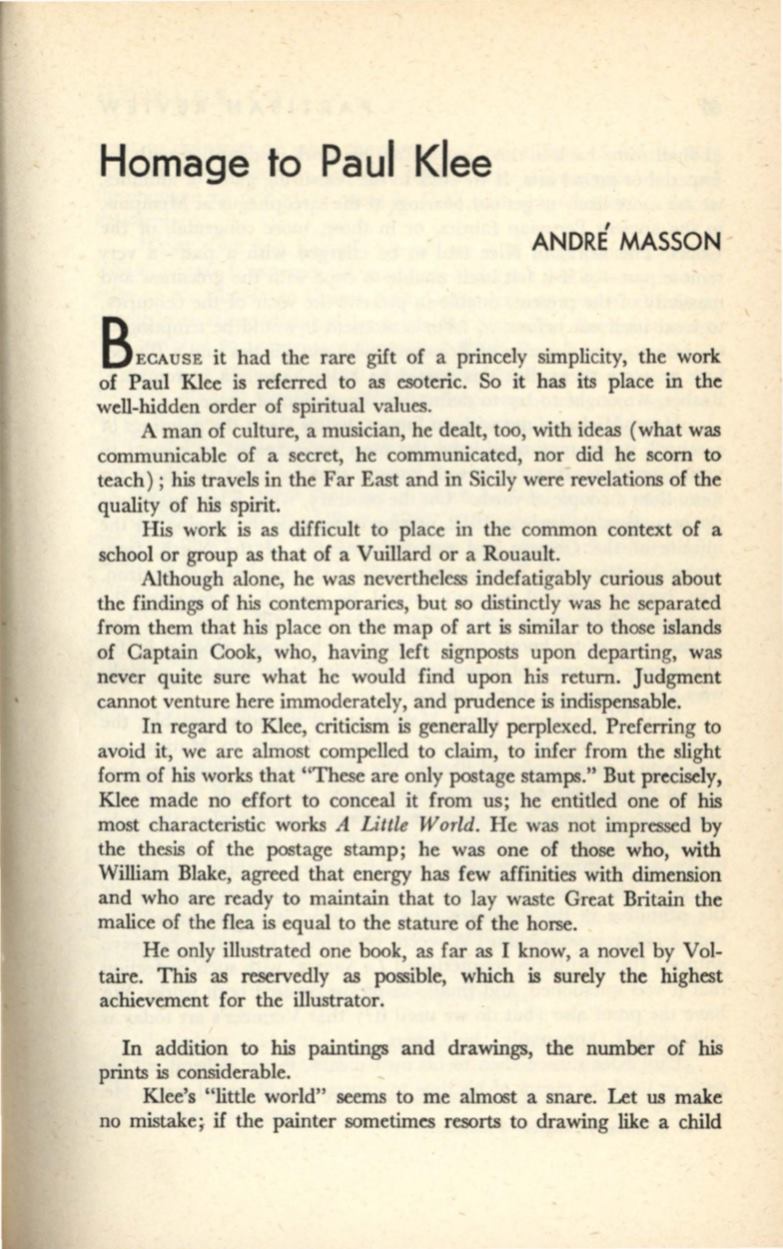
Homage to Paul Klee
I
ANDRE MASSON
BECAUSE
it had the rare gift of a princely simplicity, the work
of Paul Klee is referred to as esoteric. So it has its place in the
well-hidden order of spiritual values.
A man of culture, a musician, he dealt, too, with ideas (what was
communicable of a secret, he communicated, nor did he scorn to
teach); his travels in the Far East and in Sicily were revelations of the
quality of
his
spirit.
His work is as difficult to place in the common context of a
school or group as that of a Vuillard or a Rouault.
Although alone, he was nevertheless indefatigably curious about
the findings of
his
contemporaries, but so distinctly was he separated
from them that his place on the map of art is similar to those islands
of Captain Cook, who, having left signposts upon departing, was
never quite sure what he would find upon his return. Judgment
cannot venture here immoderately, and prudence is indispensable.
In regard to Klee, criticism is generally perplexed. Preferring to
avoid it, we are almost compelled to claim, to infer from the slight
form of his works that "These are only postage stamps." But precisely,
Klee made no effort to conceal it from us; he entitled one of
his
most characteristic works
A Little World.
He was not impressed by
the thesis of the postage stamp; he was one of those who, with
William Blake, agreed that energy has few affinities with dimension
and who are ready to maintain that to lay waste Great Britain the
malice of the flea is equal to the stature of the horse.
He only illustrated one book, as far as I know, a novel by Vol–
taire. This as reservedly as possible, which is surely the highest
achievement for the illustrator.
In addition to
his
paintings and drawings, the number of
his
prints is considerable.
Klee's "little world" seems to me almost a snare. Let us make
no mistake1 if the painter sometimes resorts to drawing like a child


